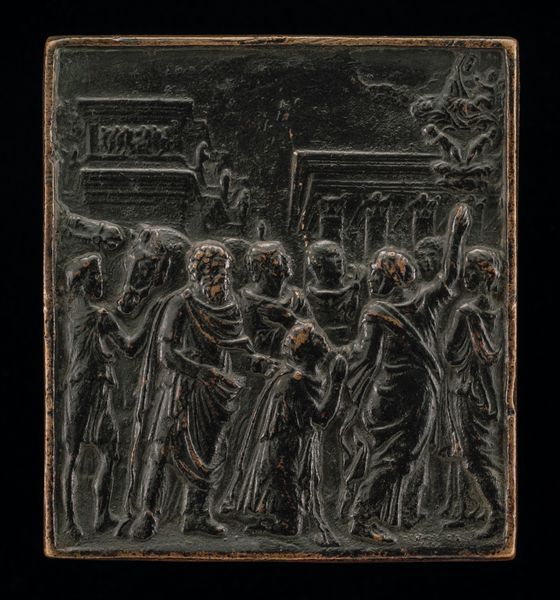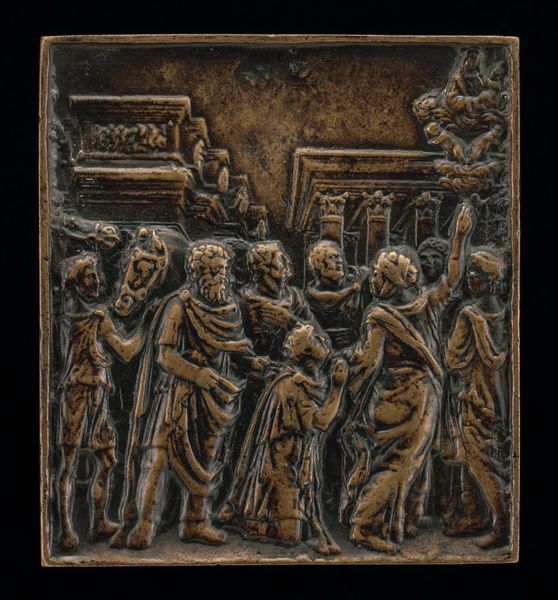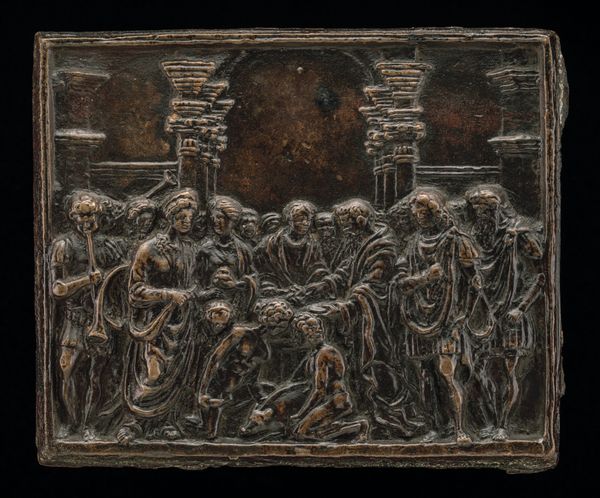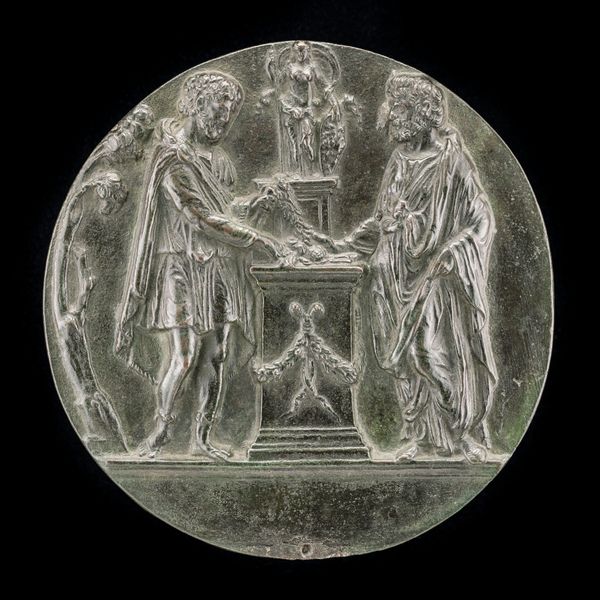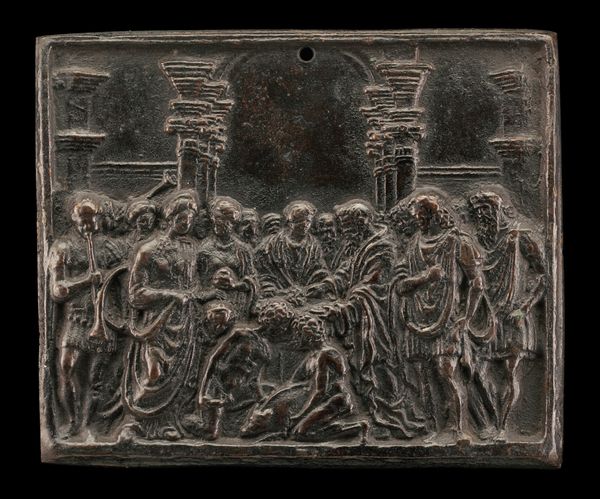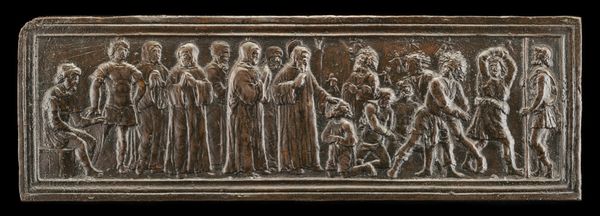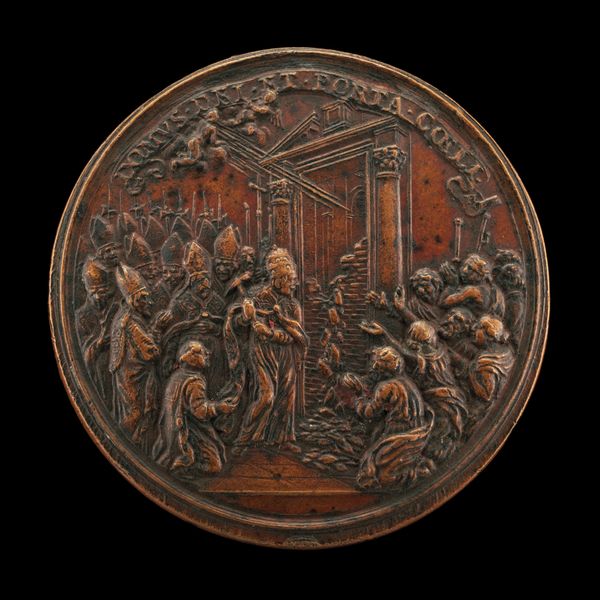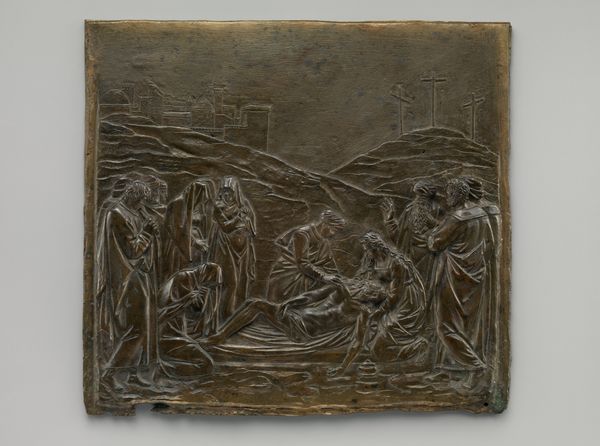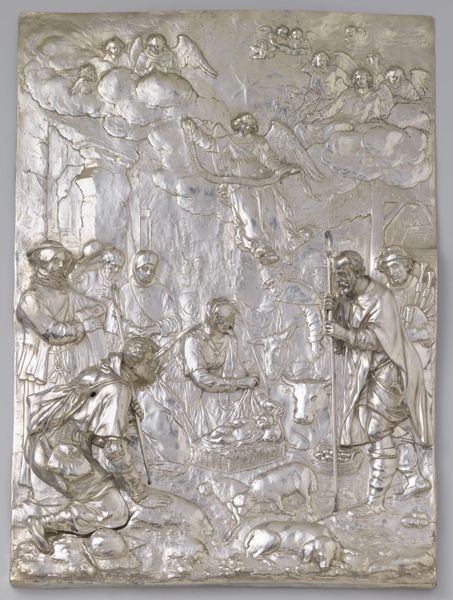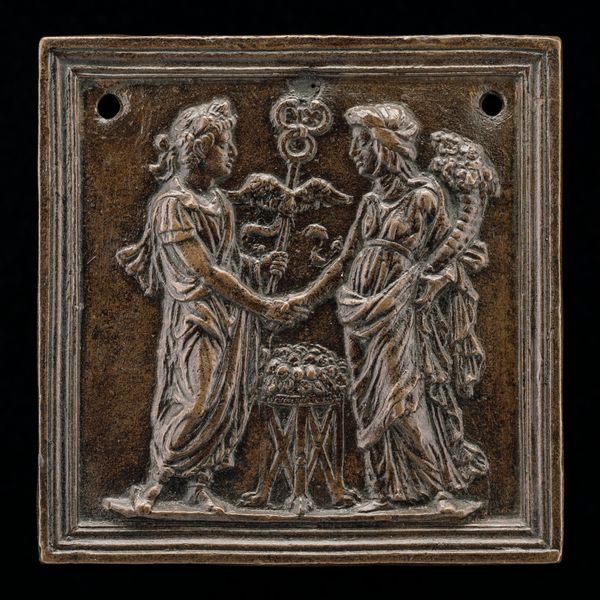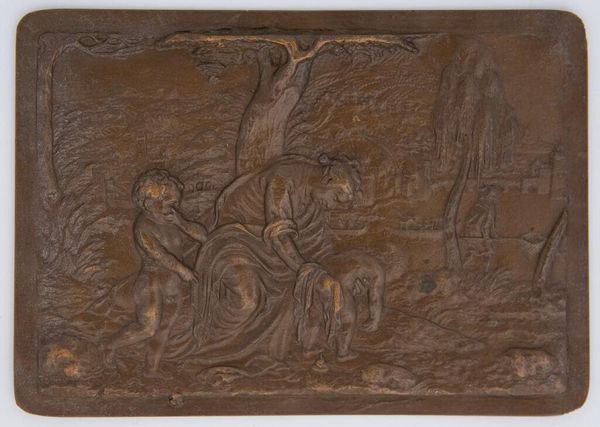
The Entry of Christ into Jerusalem 1526 - 1538
0:00
0:00
relief, glass, sculpture
#
narrative-art
#
relief
#
figuration
#
glass
#
geometric
#
sculpture
#
men
#
history-painting
#
academic-art
#
decorative-art
#
italian-renaissance
Dimensions: H. 2-3/8 x W. 3-1/8 in. (6.0 x 7.9 cm)
Copyright: Public Domain
Curator: Valerio Belli, also known as Il Vicentino, crafted this remarkable relief between 1526 and 1538. It's called *The Entry of Christ into Jerusalem* and is rendered in glass. Editor: The luminosity of it strikes me first. It has an ethereal, almost ghostly quality, doesn’t it? So many figures, finely detailed, emerge from what could easily have been just a clear panel. Curator: Indeed, that translucence is integral to its symbolic weight. The crystal medium suggests purity, divine light—fitting for representing Christ's triumphal entry. It also carries strong resonance in Renaissance art as a sign of wealth and status. Editor: It's a curious choice of material, though. Glass seems fragile for such an important narrative. Were these reliefs common, or was this unusual for the time? How was it made, actually? It seems unbelievably skillful! Curator: These were not everyday objects; this particular example speaks to Belli's talent but also his patron's considerable means. It demonstrates how even a traditional narrative could become imbued with added meaning via its medium. The themes that connect to power and social hierarchy cannot be overstated when considering Italian Renaissance art. Editor: So, the choice of glass isn't just about beauty; it's actively communicating status. And this depiction... it's classical, orderly, very Renaissance. Do you think the cool tone, a property of glass, affects how we read the scene emotionally? Curator: Absolutely. While it depicts a moment of high excitement for Christ's followers, the glass's coolness lends a certain reserve, perhaps a foreshadowing of what is to come. The inscription above emphasizes this: Benedictus qui venit in nomine Domini—"Blessed is he who comes in the name of the Lord". Even this choice of language places Christ within a divine, pre-ordained history. Editor: A very thoughtful choice by Belli to deploy light and medium. I hadn’t considered how thoroughly material could support symbolic meaning like that. Curator: It reveals that the making and displaying of these artworks has multiple layers to consider. The visual power of Belli's "Entry" lies precisely in its fusion of material richness and scriptural depth. Editor: I will never look at glass the same way.
Comments
No comments
Be the first to comment and join the conversation on the ultimate creative platform.
